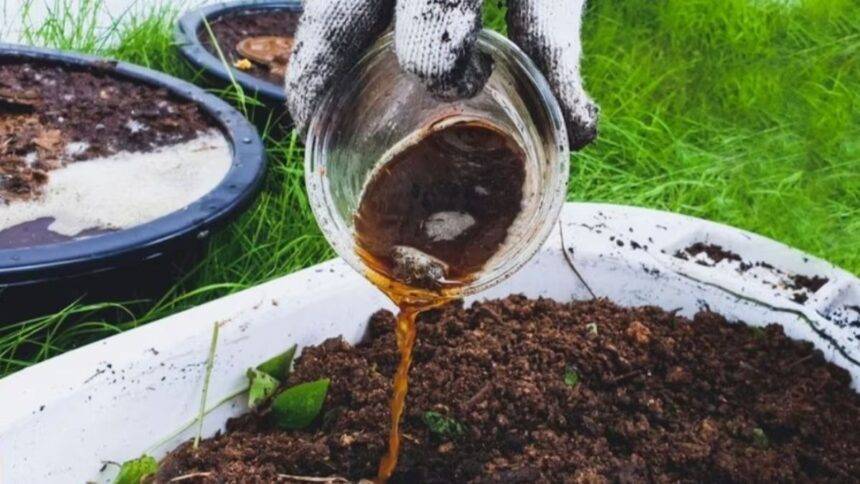Main Points In Hindi (मुख्य बातें – हिंदी में)
Sure! Here are the main points from the provided text translated into Hindi:
-
संस्कृति तकनीक का महत्व: कृषि में संस्कृति तकनीक का बड़ा योगदान है, जो फसलों की उपज बढ़ाने और रोगों से लड़ने में सहायक होती है।
-
लेफ्ट कल्चर (मायकोरिज़ा) कल्चर: यह सभी प्रकार के अनाज, दालें, तिलहन और सब्जियों में उपयोग होता है। यह पौधों में फास्फोरस की उपलब्धता बढ़ाता है और जल और अन्य पोषक तत्वों के अवशोषण में मदद करता है।
-
पी.एस.बी. (फॉस्फोबैक्टेरिन) संस्कृति: यह बैक्टीरियल उर्वरक सभी फसलों में फास्फोरस की उपलब्धता बढ़ाने के लिए उपयोग होता है। यह अम्लीय मिट्टी में बहुत लाभकारी है और 10-25% तक उपज बढ़ाने में सहायक होता है।
-
बीज उपचार की विधि: बीजों को एक विशेष संस्कृति घोल में उपचारित करने के लिए जौ और चीनी का इस्तेमाल किया जाता है, जिससे बीजों पर संस्कृति की परत बनती है, जिससे उनकी वृद्धि में तेजी आती है।
- संस्कृति का प्रबंधन: संस्कृति को धूप और अधिक गर्मी से बचाकर सुरक्षित स्थान पर रखना चाहिए और इसे एक विश्वसनीय संस्थान से खरीदना चाहिए।
Main Points In English(मुख्य बातें – अंग्रेज़ी में)
Here are the main points derived from the provided text on culture technology in farming:


-
Role of Culture Technology: Culture technology significantly enhances crop yield and helps plants resist diseases, leading to increased profits in farming practices.
-
Mycorrhizae Culture: This culture enhances the availability of phosphorus to various crops (grains, pulses, oilseeds, and vegetables) by enabling the direct absorption of phosphorus and aiding in the uptake of water and nutrients.
-
Production Method for Mycorrhizae: Farmers should prepare the field by covering it with straw, burning it, and then applying the culture in rows before sowing specific crops. This process includes burying the roots for further culture production.
-
P.S.B. (Phosphate Solubilizing Bacteria): P.S.B. culture enhances phosphorus availability in crops, particularly in acidic soils, and can increase yield by 10-25%. These bacteria help in the solubilization of insoluble phosphates, making them accessible to plants while also providing disease resistance.
- Seed Treatment with P.S.B.: To improve seed performance, seeds can be treated with a mixture of jaggery water and P.S.B. culture. This involves soaking seeds in the mixture, drying them, and ensuring proper storage of the culture to maintain its efficacy.
Complete News In Hindi(पूरी खबर – हिंदी में)
संस्कृति प्रौद्योगिकी कृषि में महत्वपूर्ण भूमिका निभाती है। यह फसलों की उपज बढ़ाने में मदद करती है। इसके अलावा, यह बीमारियों से लड़ने की क्षमता को भी बढ़ाती है। इसी के मद्देनजर, आज हम आपको दो प्रकार की संस्कृतियों के बारे में बताएंगे, जिनका उपयोग फसलों और बीजों पर किया जा सकता है ताकि अच्छे लाभ कमा सकें। यह संस्कृति पौधों के विकास और फूलों को बढ़ाती है। इसके बाद उपज में वृद्धि होती है। आइए इन दो संस्कृतियों के बारे में जानते हैं।
लेफ्ट कल्चर (माइकोरिज़ा) संस्कृति
यह संस्कृति सभी प्रकार के अनाज, दलहन, तिलहनों और सब्जियों में उपयोग होती है। यह पौधों में फॉस्फोरस की उपलब्धता बढ़ाती है। इसके इस्तेमाल से मिट्टी में घुलनशील फॉस्फोरस पौधों की जड़ों तक सीधा पहुंचता है। फॉस्फोरस के साथ-साथ, यह पौधों को पानी और अन्य पोषक तत्व भी प्रदान करती है।
उत्पादन और उपयोग की विधि
फसल के क्षेत्र को तैयार करने के बाद, इसकी सतह पर भूशी फैलाएं और जलाएं। इसके बाद, संस्कृति को पंक्तियों में छिड़कें और बोएं। 10 वर्ग मीटर की खेती के लिए 2 किलोग्राम का उपयोग करें। इन पंक्तियों में ज्वार, मक्का या गिनी घास में से कोई एक फसल बोएं। 45 दिन बाद, पौधों के ऊपरी भाग को काटकर हटा दें। पौधे की जड़ को मिट्टी सहित 15 सेंटीमीटर गहराई में दबा दें। इसे गहरी खुदाई करें और एक प्लास्टिक बैग में रखें। अपनी आवश्यकता के अनुसार संस्कृति का उत्पादन करें और बुवाई के समय 1.5 टन प्रति हेक्टेयर की दर से बीजों पर छिड़कें। इसे धूप और पानी से बचाएं। उर्वरकों और दवाओं के सीधे संपर्क से बचें। यदि संभव हो, तो फसल में गोबर या कंपोस्ट का उपयोग करें। संस्कृति उत्पादन: फसल के क्षेत्र को तैयार करें, भूशी फैलाएं और इसे जलाएं। फिर, पंक्तियों में संस्कृति छिड़कें और बोएं।
अधिक जानकारी के लिए पढ़ें: इन दो जैविक उर्वरकों को बीज में मिलाएं, फिर फसल में यूरिया छिड़कने की आवश्यकता नहीं होगी।
P.S.B. (फॉस्फोबैक्टेरिन) संस्कृति
यह बैक्टीरियल उर्वरक सभी फसलों (दलहन, अनाज और सब्जियों) में फॉस्फोरस की उपलब्धता बढ़ाने के लिए उपयोग किया जाता है। यह अम्लीय मिट्टी में बहुत लाभकारी है। फॉस्फेट फसल उत्पादन में नाइट्रोजन के बाद दूसरा महत्वपूर्ण पोषक तत्व है। पौधों की वृद्धि और अनाज को मजबूत और मोटा बनाने के लिए फॉस्फेट की आवश्यकता होती है। यह कोशिकाओं के विभाजन और वसा और प्रोटीन (एल्बुमिन) के निर्माण में मदद करता है। यह फूलने और बीजों के निर्माण, जड़ों के निर्माण और फैलाने में सहयोग करता है।
जब मिट्टी में फॉस्फेट उर्वरक का उपयोग किया जाता है, तो केवल 12 से 15 प्रतिशत पौधों के लिए उपलब्ध होता है और शेष मिट्टी में अव्यवस्थित हो जाता है। अधिकांश फॉस्फेट उर्वरक मिट्टी में ट्रिकल्सियम फॉस्फेट के रूप में स्थापित हो जाता है, जो फसलों के लिए बेकार होता है। ये बैक्टीरिया जल्द ही कंपोस्ट मिट्टी में अव्यवस्थित फॉस्फेट को घुलनशील बना देते हैं, जिसे पौधे आसानी से अवशोषित कर सकते हैं।
P.S.B. के उपयोग से उपज में 10-25 प्रतिशत तक वृद्धि संभव है। फॉस्फेट घुलनशीलता बैक्टीरिया (PSB) ऑर्गेनिक एसिड जैसे लैक्टिक, साइट्रिक, ऑक्सालिक और फ्यूमरिक का उत्पादन करते हैं, जो मिट्टी के फॉस्फेट या रॉक फॉस्फेट को अधिकतम घुलनशीलता में लाते हैं और इस प्रकार लगभग 20-25 प्रतिशत फॉस्फेट पौधों के लिए उपलब्ध हो जाता है। इस बैक्टीरियल उर्वरक का उपयोग करके हमारे किसान अनाज, दलहन और सब्जियों की उपज बढ़ा सकते हैं। ये बैक्टीरिया रोग प्रतिरोधक यौगिक भी छोड़ते हैं, जो पौधों को बीमारियों से बचाते हैं।
बीजों का इलाज कैसे करें
बीजों का इलाज करने के लिए पहले आधा लीटर पानी में करीब 100 ग्राम गुड़ डालकर पंद्रह मिनट तक उबालें। इसके बाद, घोल को ठंडा होने दें। अब इसमें एक पैकेट PSB मिलाएं। इसे अच्छी तरह मिलाकर बीजों के इलाज के लिए घोल तैयार कर लें। आधे एकड़ के लिए पर्याप्त बीजों को पानी से धोकर सुखा लें और धीरे-धीरे संस्कृति घोल को बीजों पर डालकर साफ हाथों से अच्छे से मिलाएं ताकि बीजों पर संस्कृति की एक परत आ जाए। संस्कृति लगे बीजों को अखबार या साफ कपड़े पर फैलाएं और आधा घंटे के लिए छाया में सुखाएं, इसके बाद जल्दी से इन बीजों को बोएं। किसानों को यह ध्यान में रखना चाहिए कि फसलों को लगाने से पहले जड़े धोकर संस्कृति घोल में 10-15 मिनट के लिए डुबोकर उपचारित करें और फिर बोएं/स्थानांतरित करें।
अधिक जानने के लिए पढ़ें: ये तीन जैविक उर्वरक बहुत कम समय में तैयार किए जा सकते हैं, ये फसलों के लिए बहुत लाभकारी हैं।
संस्कृति लगे बीजों को जल्दी बोएं। गुड़ के घोल में संस्कृति को तब मिलाएं जब वह ठंडा हो जाता है। संस्कृति को एक सुरक्षित स्थान पर रखें, इसे धूप और अधिक गर्मी से बचाएं। संस्कृति केवल किसी विश्वसनीय संस्थान से खरीदें, जैसे बिरसा कृषि विश्वविद्यालय, रांची। पैकेट पर लिखित अवधि के भीतर ही संस्कृति का उपयोग करें। इसे ठंडे और सूखे स्थान पर रखकर इस अवधि तक सुरक्षित रखें।
Complete News In English(पूरी खबर – अंग्रेज़ी में)
Culture technology plays a big role in farming. This helps in increasing the yield of crops. Besides, the ability to fight diseases increases. Keeping this in view, today we are telling you about two different types of cultures which can be used on crops and seeds to earn good profits. This type of culture increases the growth and flowering of plants. Later the yield increases. Let us know about these two cultures.
Left Culture (Mycorrhizae) Culture
This culture is used in all types of grains, pulses, oilseeds and vegetables. It increases the availability of phosphorus in plants. With its use, soluble phosphorus in the soil gets absorbed and reaches the roots of the plants directly. Apart from providing phosphorus, it is helpful in providing water and other nutrients to the plants.
Production and method of use
After preparing the field, spread straw on its surface and burn it. After that, spray the culture in the rows and sow it. 2 kg in 10 square meter of cultivated land. Spray in culture rows. Plant any one crop among jowar, corn or guinea grass in these rows. After 45 days, cut the upper part of the plants and remove them. The root of the plant should be buried 15 cm deep including the soil. Lift it deep and keep it in a plastic bag. Produce the culture as per your requirement and sprinkle the seeds in the rows at the time of sowing at the rate of 1.5 tonnes per hectare. Protect it from sunlight and water. Avoid direct contact with fertilizers and medicines. If possible, use cow dung or compost in the crop. Use soil attached to plant roots. Culture Production: After preparing the field, spread straw on the surface and burn it. After this, sprinkle the culture in the row and sow.
Also read: Add these two organic fertilizers to the seeds, then there will be no need to sprinkle urea in the crop.
P.S.B. (phosphobacterin) culture
This bacterial fertilizer is used to increase the availability of phosphorus in all crops (pulses, grains and vegetables). It is very beneficial in acidic soil. Phosphate is the second important nutrient after nitrogen in crop production. Phosphate is needed for the growth of plants or to make the grains strong and thick. It helps in the division of cells and the formation of fat and albumin (protein). Helps in flowering and formation of seeds, formation of roots and its spread.
When phosphate fertilizer is used in the soil, only 12 to 15 percent of it is available to the plants and the rest becomes stable in the soil in an insoluble state. Most of the phosphate fertilizer used in the soil gets fixed in the soil in the form of tricalcium phosphate, which is useless for crops. These bacteria soon convert the insoluble phosphate found in the compost soil into a solution, which is easily absorbed by the plants.
P.S.B. With the use of it, it is possible to increase the yield by 10-25 percent. Phosphate solubilization bacteria (PSB) produce organic acids like lactic, citric, oxalic and fumaric, which help in solubilizing soil phosphate or rock phosphate to a greater extent and thus about 20-25 per cent. Phosphate becomes available to plants. By using this bacterial fertilizer our farmers can increase the yield of grains, pulses and vegetables. These bacteria also secrete disease resistant compounds, which protect plants from diseases.
Treat seeds like this
To treat the seeds, first add about 100 grams of jaggery in half liter of water and boil for fifteen minutes. After this let the solution cool down. After this, add one packet of PSB in this solution. Mix the cultures. Now it has become a solution for treating seeds. Wash and dry enough seeds for half an acre in water and pour the culture solution little by little over the seeds and mix well with clean hands in such a way that a layer of culture appears on the seeds. Spread the culture treated seeds on newspaper or clean cloth and let them dry in the shade for half an hour, after that sow the treated seeds soon. Farmers should note that before planting the crops for which Bichda is planted, wash the roots of the plants, dip them in culture solution and treat them (for 10-15 minutes) and then sow/transplant.
Also read: These three organic fertilizers can be prepared in a very short time, they are very beneficial for crops.
Sow culture treated seeds early. Add culture to the jaggery solution only after it cools down. Keep the culture in a safe place, protecting it from sunlight and excessive heat. Buy culture only from any reliable institute other than Birsa Agricultural University, Ranchi. Be sure to use the culture for the period written on the packet. Keep it in a cool and dry place till this period.






